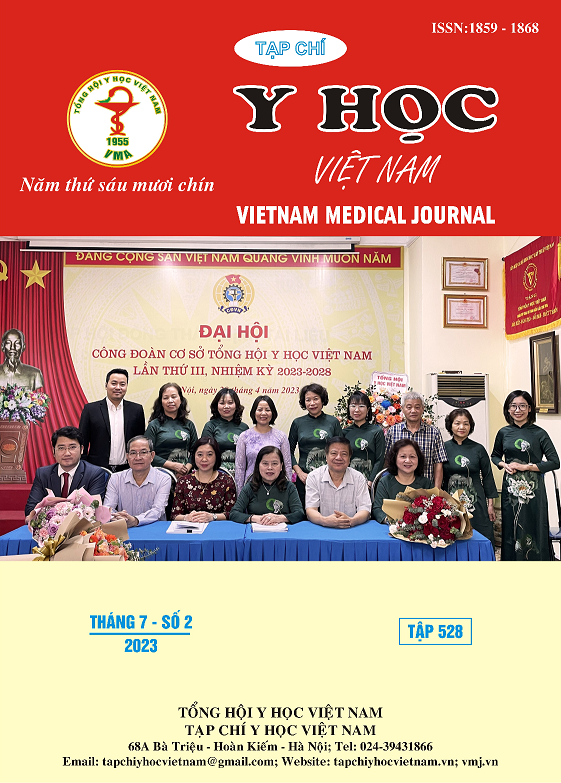EFFECTIVENESS OF INNOVATED MEAW TECHNIQUE IN THE NON-SURGICAL TREATMENT OF COMPLEX SKELETAL CLASS III PATIENTS
Main Article Content
Abstract
Objectives: Evaluate the effectiveness of innovated MEAW technique in the non-surgical treatment of severe skeletal class III patients. Methods: Clinical Quasi-exprimental study was carried out on 31 severe skeletal class III patients treated with innovated MEAW technique. Research data included: extra and intra oral photos, study models, lateral and frontal cephalometric xrays. The photos were scored by 2 groups of observers (lay persons and professionals) using NRS scale, the study models were analysed and scored following the ABO standards, cephalometric analysis of Ricketts, Arnett and Sato were used to evaluate the cranio-facial characteristics. The data before and after treatment were compared statistically. Results: The study showed the effectiveness of the innovated MEAW technique in the treatment of severe skeletal class III cases: improve facial aesthetic from ugly-acceptable to normal-harmonious level, reestablish good occlusion according to ABO standards, reduce the bone base disharmony by creating a backward and clockwise rotation of the mandible and by causing the changes of maxillary bone base through cranio-facial dynamics and orthodontic mechanics aimed at A point, move forward the upper incisors, upright and move backward the lower incisors, improve the protrusion of the lips and chin to the True vertical line, balance the horizontal occlusal plane to reduce the mandibular lateral deviation.
Article Details
Keywords
innovated MEAW technique, skeletal class III malocclusion
References
2. Trần Ngọc Quảng Phi Dương Thị Hoài Xuân (2015) "Chỉ số phân tích đo sọ mô mềm trên người Việt trưởng thành có khuôn mặt hài hoà". Y học thực hành, 958 (4), 6-10.
3. Kyoko Ishizaki, Koichi Suzuki, Sadao Sato (2010) "Morphologic, functional, and occlusal characterization of mandibular lateral displacement malocclusion". Am J Orthod Dentofacial Orthop 137 (4), 454e1-e9.
4. Masahide Motokawa, Tomoko Sasamoto, Masato Kaku et al (2012) "Association between root resorption incident to orthodontic treatment and treatment factors". European Journal of Orthodontics, 34, 350–356.
5. Orthodontics American Board of (Revised 2013) "The ABO Discrepancy Index (DI) A Measure of Case Complexity".
6. Orthodontics American Board of (Revised 2012) "Grading System for Dental Casts and Panoramic Radiographs".
7. Sadao Sato Akiyoshi Shirasu (2019) Orthodontic treatment of malocclusion aimed at establishing functional occlusion, Daiichi Shika publishing Company, Japan, 239.
8. Shushu He Jinhui Gao, Peter Wamalwa, Yunji Wang et al (2013) "Camouflage treatment of skeletal Class III malocclusion with multiloop edgewise arch wire and modified Class III elastics by maxillary mini-implant anchorage". Angle Orthodontist, 83 (4), 630-40.
9. M. Tabancis, A. Ratzmann, P. Doberschütz and K. F. Krey (2020) "Multiloop edgewise archwire technique and denture frame analysis: a systematic review". Head & Face Medicine, 16 (32), 2-9.
10. Yi Guo Xinrui Qiao, Shiyu Yao, Tiancheng Li et al (2020) "Clinical Study: CBCT Analysis of Changes in Dental Occlusion and Temporomandibular Joints before and after MEAW Orthotherapy in Patients with Nonlow Angle of Skeletal Class III". BioMed Research International, 2020, 1-7.


